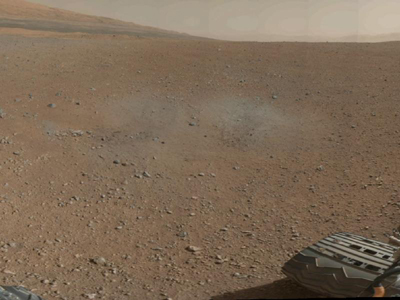NASA's Curiosity captures first 360-degree colour panorama of Gale Crater on Mars
NASA’s Curiosity rover is getting into its stride on Mars, as the rover’s imager has sent back its first colour panorama of Gale Crater where it is basing itself for the next two years to carry out scientific experiments.
The panorama (right) has been captured by the rover, which will be optimising its software in the next few days to start to carry out experiments to see if life has ever existed on the red planet.
Having landed on Mars earlier this week, after an epic journey that started last November, the Curiosity probe has started to deploy its just-activated navigation cameras, which NASA calls navcams.

A segment of the first colour 360-degree panorama from NASA’s Curiosity rover, made up of thumbnails – small copies of higher-resolution images. The mission’s destination, a mountain at the center of Gale Crater called Mount Sharp, can be seen in the distance. Image via NASA/JPL-Caltech/MSSS
“These navcam images indicate that our powered descent stage did more than give us a great ride, it gave our science team an amazing freebie,” said John Grotzinger, project scientist for the mission from California Institute of Technology. “The thrust from the rockets actually dug a one-and-a-half-foot-long (0.5 metre) trench in the surface. It appears we can see Martian bedrock on the bottom. Its depth below the surface is valuable data we can use going forward.”
Curiosity is carrying 10 science instruments with a total mass 15 times as large as the science payloads on NASA’s other Mars rovers Spirit and Opportunity, according to the space agency.

Space engineers working on Curiosity on Earth, before its launch. Image by NASA